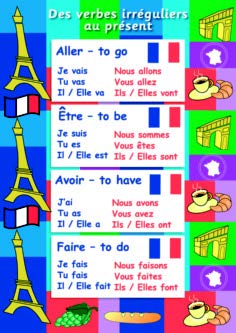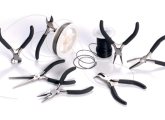
Identify and use language related to recipes in the target language, and develop your listening, reading, writing and speaking skills
Team work; practising listening, reading, writing and speaking; peer assessment, one to-one support; differentiation; pupil autonomy; evidence of progress; oh and a recipe for crêpes ... all in one lesson? Using your language lab (or a variety of multimedia resources) can create an engaging and collaborative learning session for students, especially when you construct it around a subject that’s bound to appeal to appeal to everyone’s tastes. I’ve taken French as the example target language here, but it’s easy to find appropriate recipe websites related to other countries. Bon appetit…
Starter activity
Begin with this question to introduce the topic of food: “If you were a fruit, what fruit would you be?” Si tu étais un fruit quel fruit serais-tu? Leave the students plenty of time to think about it (whilst you do the register, perhaps). The only phrase you need teach the pupils is “I would be a…because it’s…, too.” Je serais un(e)...parce que c’est… aussi.
This is a great way of recycling language using a new and engaging phrase. There is no right or wrong answer and everyone’s opinion is valid. The most able can add extra details with connectives (however, but) and negatives (I would not be a…) Ask students to share their answers and go fruit shopping in the class by collecting each other’s responses. How many can they remember? (“I would be a starfruit because I am exotic” is my favourite answer so far.)
Main activities
1. Say what you see
Open the crepes-recette.com website for all students, and ask them to discuss in pairs what they see on the homepage (step-by-step instructions for making a crêpe). A language lab with a ‘random pair function’ enables the process to be repeated several times with ease, thus giving learners a chance to explore different vocabulary and sentence constructions.
2. Task force
Divide the class into four groups. Give each team a specific task, such as ‘identify the ingredients used’, ‘note all timings’, ‘identify equipment needed’ and ‘identify unknown or unusual words’. It is always worth giving members of groups specific roles, such as leader, timekeeper, quality assurance officer and spokesperson. The teams can swap tasks if you have time or they can feedback straight away about what they have found. If your system allows, you can send a pupil’s screen to all the other learners’ monitors so that their work can be seen by all, thereby improving the collaboration aspect of the task.
3. Skill sets
Students can now move on to a skills-based activity inspired by the crêpe recipe. Pupils can record themselves reading the recipe or respond to questions set by the teacher regarding how they cook a crêpe. The teacher can send learners further reading or listening resources to extend the task. With the right language lab, you can monitor all the work that the pupils complete in the lesson; seeing if they are on task or are struggling with a particular area. Why not set up a web quest? This is ideal for stretching the more able as you can use authentic target language websites where the students are seeking particular information. Ask them to find out the current price of the ingredients they’ll need for the crêpe recipe, for example. To encourage the use of numeracy skills, you could even get students to compare these with prices in the UK using the current exchange rate.
4. Q&As
Use the quiz function of your lab to send out an assessment type activity based on the crêpe recipe. You could, for example, ask the students to identify the quantities of the ingredients, or pose more open questions about their opinions of the recipe. To keep it interesting, the quiz can include audio and video files, text and pictures. This allows you to assess all four skills: listening, speaking, reading and writing.
Home learning
The students can make crêpes at home and document the stages with photographs or videos. These can then be turned into slide shows using software such as PowerPoint or Prezi, and films using Movie Maker. Both slide shows and films can include text and audio to practise writing and speaking skills. These presentations can then be shared via the language lab in future lessons where pupils’ peers assess each other’s work.
Summary
To test pupils’ knowledge, I like using the collaborative nature of primarypad.com, a web-based word processor designed for schools that allows pupils and teachers to work together in real-time. Pupils can pose each other questions such as ‘name three things you have learned today’ and answer them in a real-time chat room type setting. As a teacher, you can prepare questions in advance. The pupils’ responses will let you and them know how much they have learnt in the lesson.
Info Bar
Additional resources
Have a shared prezi presentation to which all pupils contribute in the language lab or at home. find out more about prezi at prezi.com.
Encourage the use of wordreference.com language dictionaries in the lab, but monitor how it is used. this site also has audio versions of foreign words.

Key resource
Need help teaching tricky grammar points? Often the key to remembering vocabulary, verbs and grammar is practice and exposure to the language. Classroom posters make colourful displays but they are also important learning tools. Seeing them on the walls every day, students soak up the information without realising it – even the daydreamers are learning! When it comes to exams, students can often visualise the poster to help come up with the correct answer. For informative French and Spanish poster sets showing verbs, tenses and expressions suitable for KS3+ go to superstickers.com or call 0800 318192 to request the new 2013 catalogue.
About the Author
Will Harvey is languages and enterprise specialism coordinator at Didcot Girls’ School. He is passionate about the use of ICT in the teaching and learning of languages and uses the latest software and technology to create simple and motivating language learning exercises, which give students immediate feedback on their progress. You can follow him on Twitter @willjharvey. Will uses a Sony Virtuoso language lab from ConnectED (connectededucation.com), who also supply the first cloud-based language lab, SANSSpace.









